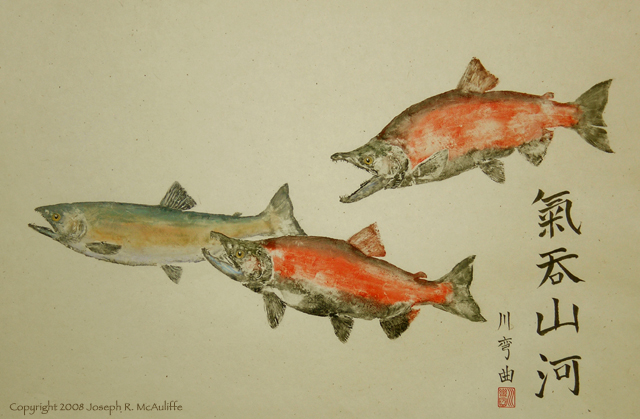
The inescapable rush of the procreative urge drives Pacific salmon to the act that both completes and ends their lives. Once and one time only, they will terminally exhaust themselves in the spawn. The vast stores of bodily energy they use to reproduce will extinguish their burning vitality once they are spent.
In preparation for spawning, a male’s jaws lengthen and become strongly hooked, forming what is called the kype. Sharp, stout teeth also increase in size, providing formidable weapons for grappling with other males. The heads and bodies of males in spawn often sport scratches and gouges from these toothy jousts over spawning rights. The male’s dramatic color change to fiery vermilion signals that spawning time is at hand.
This composition attempts to capture a glimpse of the spectacular, inflamed rush of spawning salmon. One male closely trails a gravid female as a second, rival male with toothy jaws agape swoops downward toward the first. The split tail and scratch on the dark belly of the second male shows it has battled previously with other males.
Kokanee salmon are the land-locked form of sockeye salmon (Oncorhyncus nerka). Kokanee occur naturally in lakes of Alaska and Pacific coastal Canada but have also been introduced to many large lakes in the western United States. These kokanee came from one of the southern-most introduced populations in Navajo Lake, New Mexico.
The Chinese calligraphic inscription reads “qi tun shan he,” which means “imbued with spirit that can conquer mountains and rivers.”
Size: 34 x 18 inches (2002)
Return to Gallery 5.